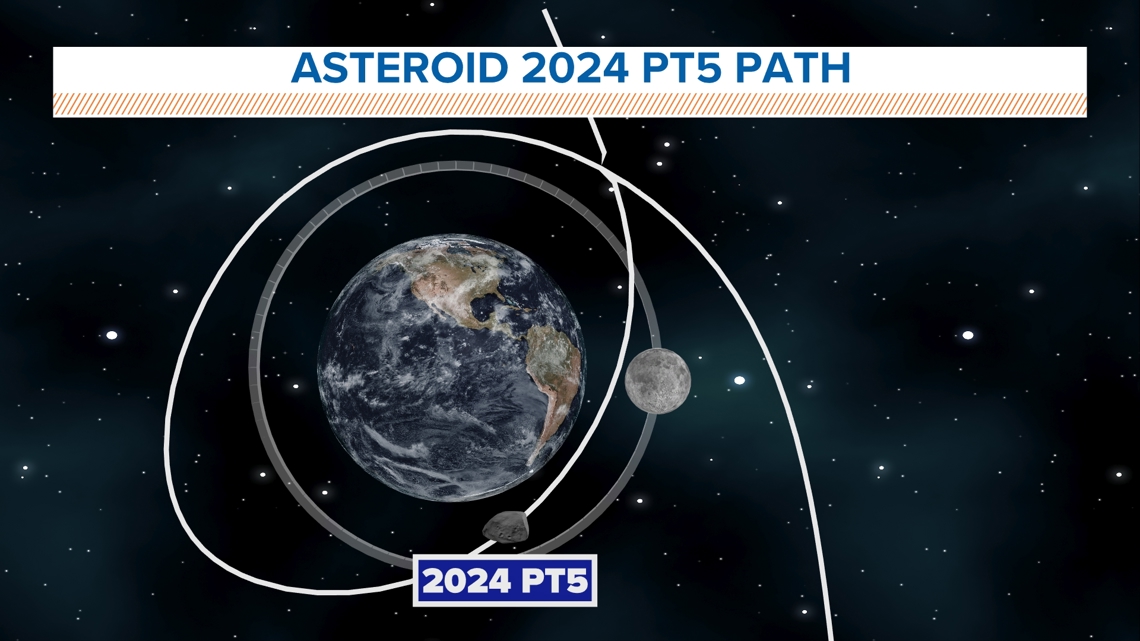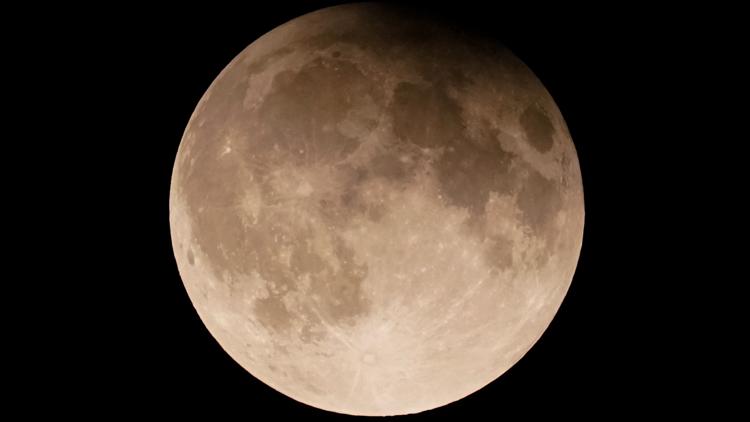DALLAS — Beginning Sept. 29, Earth will have a new celestial neighbor— a temporary "mini-moon." What scientists think is an asteroid named 2024 PT5 will orbit our planet in conjunction with our actual moon.
How temporary?
This “mini-moon” loops around Earth for nearly two months beginning September 29th and exiting November 25th. While asteroids frequently pass by Earth, PT5 will remain with us, following a unique horseshoe-shaped orbit around the Earth.
Can we see it?
It'll be tough to see. It measures only 10 meters wide and is invisible to the naked eye. Those with powerful telescopes might catch a glimpse of this shipping container-sized rock.


Where did it come from?
Asteroid 2024 PT5 was discovered on Aug. 7 by the Asteroid Terrestrial-impact Last Alert System. The system was developed by the University of Hawaii and funded by NASA. PT5 likely hails from the Arjuna asteroid belt. NASA's Near-Earth Object program continuously tracks thousands of asteroids like PT5. Interestingly, PT5 falls into the category of “temporary captured flybys,” making it a brief but exciting part of our night sky. PT5 has been compared to previous mini-moons like NX1 in 2022, which will return in 2051. PT5's orbit brings it back in 2055.
Mini-moons can come to stay for different amounts of time. Earth's gravitational pull can have different effects depending on the size of the object it is impacting. Some are considered "temporary captured orbiters" which spend at least one revolution around the earth. These can last months or years. The other type, including our upcoming mini-moon, is a temporary captured flyby since it does not complete one revolution.
Texas’s wide-open skies could offer a perfect viewing opportunity for enthusiasts interested in spotting this rare celestial guest. While smaller and dimmer than our regular Moon, the fact that Earth's gravity can trap such objects reminds us of our planet's powerful gravitational influence. Whether you're a casual sky-watcher or a dedicated astronomer, be on the lookout for updates, and maybe, just maybe, you'll catch a glimpse of Earth’s temporary visitor before it says farewell.



